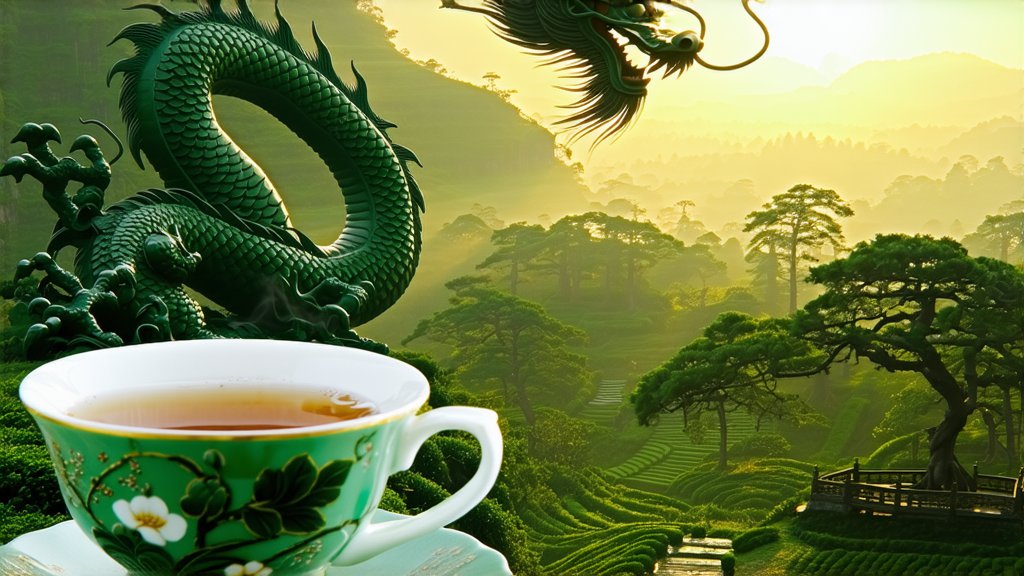
In the vast and diverse landscape of Chinese tea culture, few varieties capture the imagination quite like Longjing (Dragon Well) tea. This iconic green tea, originating from the picturesque region surrounding West Lake in Hangzhou, Zhejiang Province, has long been revered as one of China's finest teas. With its unique appearance, delicate flavor profile, and intricate cultivation process, Longjing tea stands as a testament to the artistry and dedication inherent in Chinese tea production. In this comprehensive exploration, we delve into the history, varieties, meticulous crafting techniques, and the refined art of appreciating Longjing tea, offering international readers an immersive journey into this exceptional beverage.
Historical Roots and Legendary Beginnings
Longjing tea's storied past stretches back over a thousand years, with its earliest recorded mention dating to the Tang Dynasty (618-907 AD). However, it was during the Qing Dynasty (1644-1912) that Longjing truly gained prominence, particularly under the reign of Emperor Kangxi, who is said to have been captivated by its exquisite taste and ordered annual tributes of the tea for his imperial court. The name "Longjing" translates to "Dragon Well," referencing a legendary spring near West Lake, believed to be the source of the purest water for brewing this tea. According to local folklore, two dragons once visited this spring, leaving behind mystical powers that imbue the tea with its unparalleled quality.
Varietal Diversity within Longjing
While Longjing is often referred to as a singular tea, it encompasses several distinct sub-varieties, each with its own unique characteristics:
-
Xihu Longjing (West Lake Dragon Well): The most prestigious and traditional form, grown in the limited area surrounding West Lake. Its leaves are flat and spear-shaped, resembling the blades of a ancient Chinese sword, and exhibit a vibrant jade green hue when brewed.
-
Yuhan Longjing: Produced in Yuhang District, just south of West Lake, this variety shares similar traits with Xihu Longjing but may have slight variations in flavor due to differences in soil composition and microclimate.
-
Qiandao Lake Longjing: Grown on the islands within Qiandao Lake, this tea benefits from a unique island terroir, resulting in a slightly sweeter and more floral profile compared to its West Lake counterpart.
Each of these Longjing varieties contributes to the overall richness and complexity of the tea category, offering enthusiasts a range of flavors and aromas to explore.
The Art of Longjing Tea Crafting
The creation of Longjing tea is an intricate dance between man and nature, involving precise handcrafting techniques passed down through generations. Here’s a glimpse into the meticulous process:
-
Cultivation & Harvesting: Longjing tea bushes are typically grown on slopes facing east or southeast, where they receive optimal sunlight and rainfall. The best leaves are plucked before the Qingming Festival (usually around April 5th), known as "Pre-Qingming" tea, which is considered the freshest and most tender.
-
Fixation (Pan-firing): Unlike other green teas that may be steamed or oven-dried, Longjing undergoes a unique process called pan-firing. Freshly picked leaves are spread thinly across a heated iron skillet and stirred constantly by skilled artisans. This not only halts oxidation but also imparts a distinctive roasted aroma and a flattened, sword-like shape to the leaves.
-
Shaping & Drying: After initial fixation, the leaves are further shaped by hand or machine to achieve their characteristic flat, needle-like form. They are then subjected to multiple rounds of firing and rolling to reduce moisture content gradually, enhancing both flavor concentration and shelf life.
-
Sorting & Grading: Finally, the finished tea is meticulously sorted based on size, color, and quality. Only the finest leaves make it into the premium grades of such as "Special Grade" or "Grade 1."
Savoring the Essence of Longjing
Appreciating Longjing tea goes beyond mere consumption; it is an experience that engages all senses. Here’s how to fully immerse oneself in the ritual of tasting:
-
Warm the Teaware: Begin by rinsing your teapot and cups with hot water to warm them up and remove any residual odors or flavors.
-
Measure & Infuse: Use approximately 3 grams of Longjing tea per 150ml of water. Pour hot water (around 80°C) over the茶叶, allowing them to unfurl gracefully.
-
Observe & Smell: As the leaves dance in the water, take note of their transformation from tight buds to elongated shapes. Inhale deeply to appreciate the subtle, chestnut-like fragrance released during brewing.
-
Tasting: Take your first sip slowly, allowing the tea to coat your palate fully. Notice the initial vegetal notes followed by a sweet, nutty finish with a hint of umami. The aftertaste should be clean and lingering, leaving a refreshing sensation.
-
Multiple Infusions: Longjing tea can be steeped multiple times, with each infusion revealing different layers of flavor. Adjust steeping times accordingly, starting from 1-2 minutes for subsequent brews.
In conclusion, Longjing tea is not just a beverage; it is a cultural embodiment of China's profound connection to nature and tradition. From its legendary origins to the meticulous craftsmanship involved in its production, every aspect of Longjing tea invites contemplation and appreciation. For those seeking to embark on a sensory adventure through the world of Chinese tea, Longjing offers an unparalleled journey into the heart of this ancient art form.